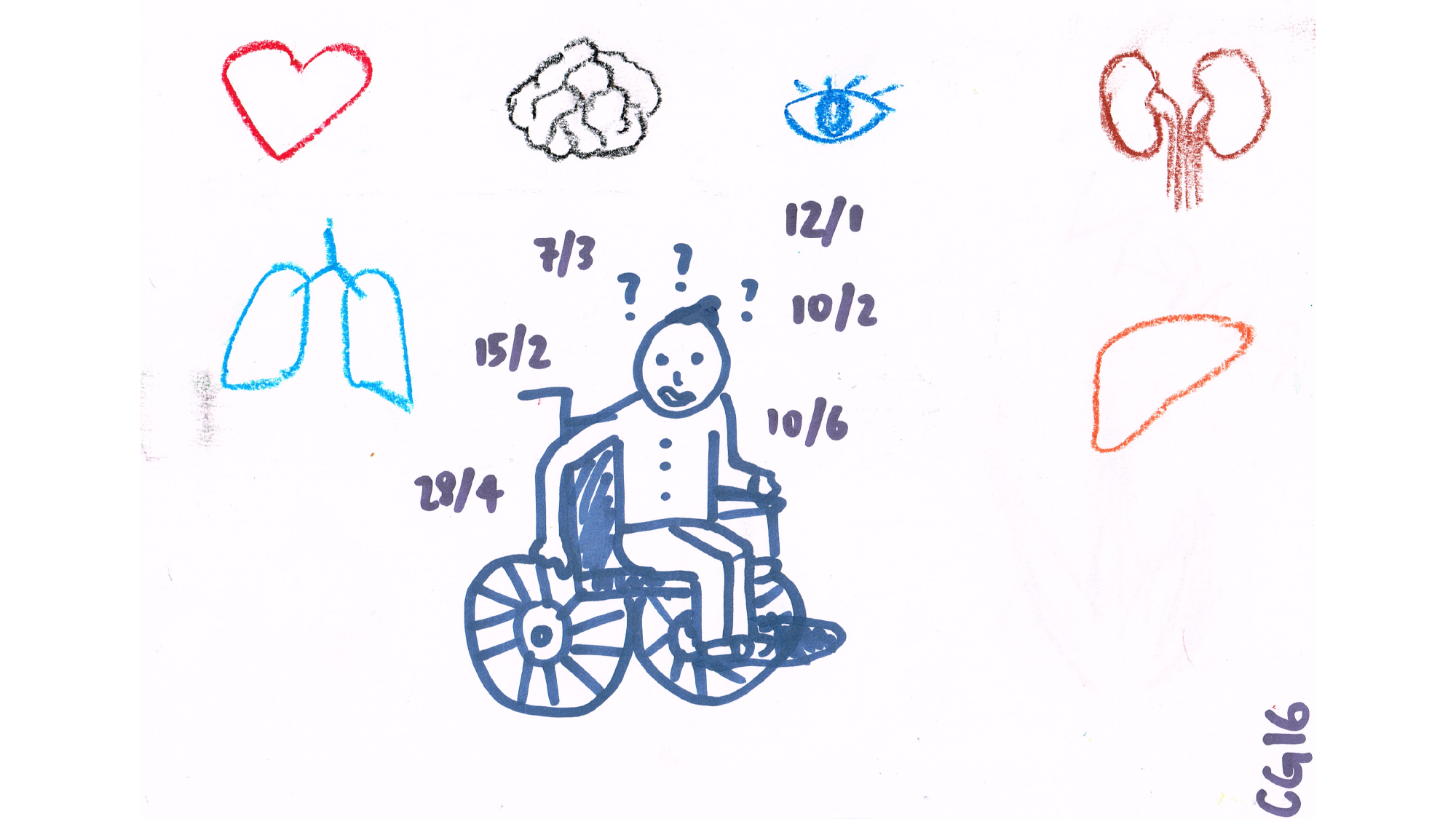Excerpts from Being Human: Stories from Family Medicine
Doing Good And (Not) Harm (page 146)
Beneficence and non-maleficence are two key pillars of medical ethics. In the doing of good, we must guard against doing unintended harm.
“In the drawing, medical students depict their experience of a bed-side tutorial. Their tutor, the dark figure, lectures a captive entourage of befuddled medical students about hypertension. He is oblivious to the expletives hurled by the agitated man restrained to the bed. Only the little child in the female medical student, all innocence as yet unacculturated by the medical system, steps forward and exclaims Oh no! in empathy. The tutor has unwittingly displayed poor role-modelling of professional values whilst providing medical training.
I confess that as a young doctor, there were times I provided good care without reference to the patient. I once had an elderly patient in a nursing home. She was ninety and had been bed-bound and uncommunicative for four years, and she had a Do Not Resuscitate directive on her charts. Despite this, she was defibrillated when she collapsed in the home and brought to the hospital. In the hospital, her children requested that no radiological or blood tests be done and no intravenous lines set up. She remained in sinus rhythm post-defibrillation for a few hours and her children were able to bid her farewell.
May we apply our knowledge and expertise with wisdom and empathy.”
— Dr Cheong Pak Yean

From “Being Human: Stories from Family Medicine”
Fragmentation Of Care (page 32)
With the increasing complexity of medical care, medicine is organised into specialty groups based on body parts or treatment modalities. While such groupings are important for medical research and training, there is a danger of dividing patients up based on organ systems for care across the entire spectrum of disease severity. The patient ends up with one appointment for each dysfunctional organ system.
“The drawing depicts a bewildered wheelchair-bound patient with a host of specialist outpatient appointments following an acute admission. Sometimes such splintered care in disparate clinics may lead to a poor outcome.
We need to integrate clinical silos into the healthcare landscape by some common concepts and common action, aided by patient health literacy. Clinical practice guidelines and care pathways cannot substitute for doctors working in tandem and in harmony. This refers to the specialist and generalist doctors. The specialist-centric model needs to give way to a more collaborative partnership with the generalist. The generalist needs new rules of engagement to participate in integrated care.
The question that we need to face is not who but what. What is a generalist and what is a specialist? We can agree that the generalist is the doctor who is not organ-defined – hence the generalist physician, the geriatrician, and the family physician. Like specialist, these doctors have undergone structured training and assessment to get to where they are, and they each practice within a definite framework. It is time to recognise the generalist not distinct from the specialist. In the integrated new world, the generalist, looking after the whole person, is simply distinct from the one who looks after specific body parts.”
— Drs Cheong Pak Yean, Goh Lee Gan, and Ong Chooi Peng
